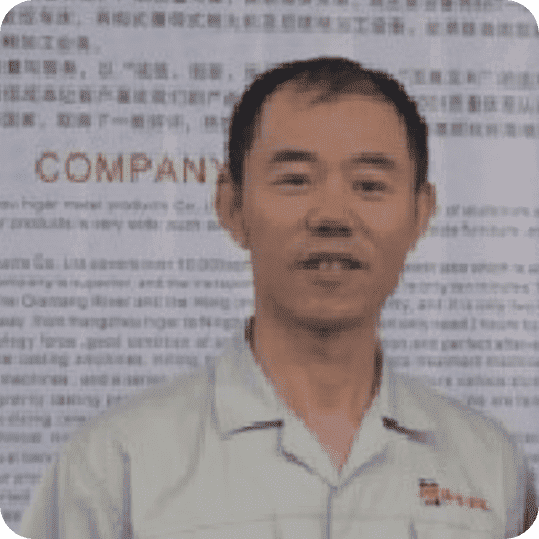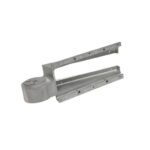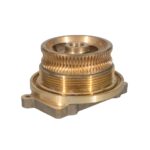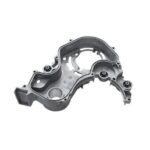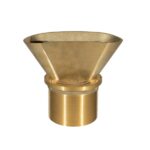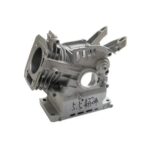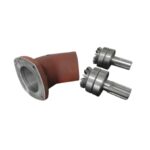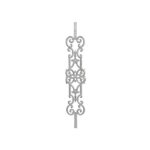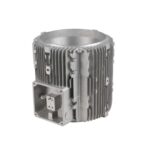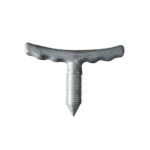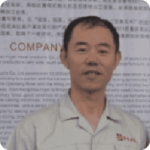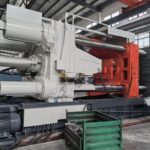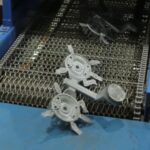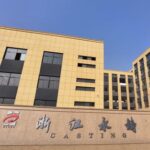As a buyer, you know aluminum die casting delivers lightweight, precise, and high-volume parts. But what many don’t see is the hidden challenge: defects. Even the best processes can face casting issues if not properly controlled.
For buyers, these defects are not just technical terms — they directly affect TCO (Total Cost of Ownership), lead times, and supply chain reliability. Let’s look at the 13 most common aluminum die-casting defects, their causes, solutions, and what you as a buyer should consider when choosing a supplier.
Quick reference table of 13 defects and their causes.
| Defect | Causes | Solutions | Factory Prevention Practices |
|---|---|---|---|
| Porosity | Gas entrapment, poor venting, turbulence, low mold temp, shrinkage | Degassing, vacuum die casting, optimized gating/venting, temp control | Spectral analysis, hydrogen testing, vacuum venting, X-ray/leak test |
| Shrinkage | Uneven wall thickness, poor feeding, poor cooling, gating issues | Uniform design, optimized cooling, feeders/risers, simulation | Solidification simulation, cooling channel optimization |
| Cold Shuts | Low mold/metal temp, slow injection, poor gating, contamination | Raise temp, increase velocity, redesign gating, improve venting | Flow simulation, stable mold temp, injection profile monitoring |
| Inclusions | Poor melt handling, dirty furnaces, inadequate refining, turbulence | Fluxing, degassing, ceramic filters, gentle pouring | Furnace cleaning, ceramic filtration, protective handling |
| Flash | Worn molds, low clamping force, excessive pressure, misalignment | Mold repair, increase clamping, optimize injection pressure | Mold maintenance, machine tonnage checks, shot blasting cleanup |
| Blistering | Gas entrapment, moisture in sprays, surface porosity, rapid heating | Venting improvement, control sprays, vacuum methods, inspection | Spray cycle control, moisture monitoring, vacuum venting |
| Cracks | Thermal stress, uneven cooling, poor design, sharp corners | Mold design optimization, controlled cooling, alloy adjustment | Stress analysis, cooling adjustments, CMM inspection |
| Misruns | Low metal temp, low injection speed, poor gating, mold heat loss | Raise temp, increase velocity, redesign gating, maintain mold temp | Flow simulation, injection profile adjustment |
| Oxide Skin | Turbulence, air exposure, poor ladle handling | Gentle pouring, protective gas, ceramic filtration | Coated handling, ceramic filters, optimized transfer |
| Soldering | High mold temp, reactive alloys, poor coatings | Anti-solder coatings, temp control, alloy selection | Routine mold coating, temp monitoring, immediate reconditioning |
| Erosion | High velocity, poor gating, weak mold steel | Gating redesign, velocity control, wear-resistant steels | Simulation for gating, velocity monitoring, tool steel upgrades |
| Hot Tears | Rigid molds, thermal stresses, sharp transitions | Flexible mold design, balanced cooling, alloy choice | Solidification simulation, fillets, cooling adjustments |
| Warping | Uneven wall thickness, premature ejection, imbalanced cooling | Design optimization, controlled ejection, cooling balance | Real-time cooling monitoring, ejection control, mold redesign |
1. Porosity (Gas or Shrinkage Cavities)
Porosity is one of the most common defects in aluminum die casting. It appears as small holes or cavities that can be found either on the surface or inside the casting. For buyers, porosity is not just a cosmetic flaw—it can compromise sealing ability, reduce mechanical strength, and cause premature failures. In applications such as automotive housings, medical equipment casings, or energy control boxes, porosity may lead to fluid leakage, product recalls, or costly warranty claims. This makes porosity a key driver of increased TCO (Total Cost of Ownership), as it raises scrap rates, rework costs, and delays in delivery.
Causes:
- Gas entrapment: Gases, primarily hydrogen, dissolve into molten aluminum during melting and solidify as pores if not removed.
- Poor mold venting: If venting is inadequate, air is trapped inside the cavity.
- Turbulence during filling: Irregular flow in poorly designed gating systems increases air entrapment.
- Improper mold temperature: Low temperatures lead to premature freezing, preventing gases from escaping.
- Shrinkage porosity: In thick sections, molten metal contracts during cooling, creating voids if no additional feeding is available.
Solutions:
- Refining and degassing: Use inert gas or vacuum treatment to reduce hydrogen content.
- Vacuum die casting: Create negative pressure to extract gases during filling.
- Optimized gating and venting: Redesign flow paths and vents to minimize turbulence and allow trapped air to escape.
- Temperature control: Maintain consistent mold and metal temperatures.
- Solidification control: Apply thermal simulations to identify hot spots and prevent shrinkage porosity.
Factory Prevention Practices:
At Yongzhu Casting, we apply spectral analysis and hydrogen testing for every melt, perform degassing and filtration before pouring, and integrate vacuum venting systems into molds for critical components. We also carry out X-ray and leak testing on finished parts to detect hidden porosity. By controlling porosity at the root causes, we keep defect rates below 3%, reducing unexpected costs for buyers.
2. Shrinkage
Shrinkage is a common internal defect where cavities or voids form because molten aluminum contracts as it cools. Unlike gas porosity, shrinkage is mainly caused by uneven solidification in areas of varying wall thickness. For buyers, shrinkage means structural weaknesses that often go unnoticed until machining or in-service operation. In automotive engine parts, energy housings, or lighting enclosures, shrinkage defects can result in leakage, cracks, and sudden failures. These issues raise rework and replacement costs, delay shipments, and damage long-term trust between buyer and supplier.
Causes:
- Uneven wall thickness: Thick sections solidify slower than thin ones, creating hot spots.
- Insufficient feeding: Lack of molten metal supply to compensate for shrinkage during cooling.
- Poor cooling system design: Inconsistent cooling rates lead to internal cavities.
- Improper gating design: Metal flow is unable to reach isolated areas before freezing.
Solutions:
- Uniform part design: Reduce thickness variations and avoid sharp transitions.
- Mold cooling optimization: Add localized cooling channels to balance solidification.
- Feeding design: Use overflows, risers, or overflow wells to supply additional molten metal.
- Simulation tools: Predict shrinkage-prone areas before tooling is manufactured.
Factory Prevention Practices:
In our factory, we apply solidification and flow simulations during mold design to identify shrinkage risk zones. When a shrinkage problem occurs, we adjust cooling channel layouts and optimize gating systems to improve feeding. For buyers, this ensures that castings maintain dimensional accuracy and structural integrity, minimizing rejections and hidden costs in mass production.
3. Cold Shuts
Cold shuts appear as visible lines, seams, or cracks on the casting surface where two streams of molten aluminum meet but fail to properly fuse. While some may mistake cold shuts for harmless surface marks, they represent serious weaknesses in the casting. For buyers, cold shuts lower tensile strength and increase the risk of cracking under stress. In industries such as automotive safety, medical devices, or aerospace components, cold shuts are unacceptable, as they directly compromise performance and safety. Shipments containing cold shuts often result in large-scale rejections and costly delays.
Causes:
- Low mold or metal temperature: Molten aluminum solidifies too early, preventing fusion.
- Low injection speed: Slow filling allows streams to lose heat and fail to merge.
- Poor gating system: Incorrect flow paths cause multiple fronts to meet improperly.
- Contamination: Oxide films or impurities at the junction lines weaken bonding.
Solutions:
- Temperature adjustment: Raise mold and molten metal temperatures for better fusion.
- Increase injection velocity: Ensure streams meet while still hot and fluid.
- Redesign gating system: Create smoother flow paths to minimize multiple fronts.
- Improve venting: Reduce trapped gas that interferes with fusion.
Factory Prevention Practices:
At Yongzhu Casting, if cold shuts are detected, we immediately review injection velocity profiles and ensure mold temperatures remain stable throughout production. Flow simulations are applied to verify proper gating design before mass production. By combining simulation and real-time monitoring, we prevent cold shuts from compromising structural performance, ensuring buyers receive castings with both strength and cosmetic quality.
4. Inclusions
Inclusions are non-metallic particles such as oxides, slag, or other impurities that become trapped in the aluminum during casting. Unlike porosity, inclusions are solid and create weak points within the casting. For buyers, inclusions are serious because they compromise mechanical strength, reduce fatigue resistance, and can damage machining tools. A part with inclusions may pass visual inspection but fail during secondary processing or in service, leading to costly rejections and long-term warranty risks.
Causes:
- Poor molten metal handling: Exposure of molten aluminum to the atmosphere forms oxide films.
- Dirty furnaces or tools: Residues from previous batches contaminate the melt.
- Improper refining: Insufficient degassing or fluxing leaves impurities.
- Turbulent filling: Aggressive gating designs fold surface oxides into the cavity.
Solutions:
- Improve melt quality: Use fluxing agents and degassing to reduce impurities.
- Filtration systems: Ceramic foam filters capture inclusions before injection.
- Furnace cleanliness: Regular cleaning and maintenance of crucibles and ladles.
- Gentle pouring and gating: Reduce turbulence during filling to prevent oxide folding.
Factory Prevention Practices:
At Yongzhu Casting, we enforce strict melt treatment protocols, including fluxing and ceramic filtration. Our furnaces are cleaned on a fixed schedule, and molten aluminum is handled with protective coatings to minimize exposure. If inclusions appear, we review furnace operations and correct handling procedures immediately. This ensures buyers receive clean castings that machine smoothly and perform reliably.
5. Flash
Flash is the thin layer of excess aluminum that seeps out along mold parting lines or ejector pin gaps. While flash may seem minor, for buyers it creates significant cost implications: extra trimming, slower production cycles, and higher machining costs. Large amounts of flash also indicate tooling or process instability, which can shorten mold life and increase part costs over time.
Causes:
- Worn molds: Gaps form as tooling deteriorates.
- Low clamping force: Insufficient force allows metal to escape.
- Excessive injection pressure: Too much force pushes metal into parting line clearances.
- Improper die alignment: Misaligned halves leave gaps.
Solutions:
- Increase clamping force: Match machine tonnage to part requirements.
- Mold repair: Recondition worn areas to restore tightness.
- Optimize injection pressure: Adjust parameters to prevent over-pressurization.
- Proper alignment checks: Ensure molds are set correctly before production.
Factory Prevention Practices:
Our team uses regular mold inspection and reconditioning to keep parting lines sharp. We also monitor machine tonnage during setup to ensure adequate clamping. For parts requiring secondary finishing, both hanging shot blasting and tumbling shot blasting machines are available, ensuring smooth edges. By reducing flash, we help buyers avoid added trimming costs and meet delivery schedules.
6. Blistering
Blistering appears as bubbles or raised surfaces on castings, usually discovered after painting, coating, or heat treatment. For buyers, blistering is unacceptable in consumer products, decorative components, or any part requiring coating adhesion. A batch of blistered castings can be entirely rejected, creating delays and unnecessary costs.
Causes:
- Gas trapped near surface: Poor venting during filling.
- Moisture in mold sprays: Excess lubricant or water vapor expands during heating.
- High porosity near surface: Porous metal expands under heat.
- Rapid heating after casting: Trapped gas expands during machining or coating.
Solutions:
- Improve mold venting: Ensure gas escapes during filling.
- Control spray usage: Limit lubricants and dry molds thoroughly.
- Vacuum casting methods: Reduce surface porosity.
- Post-cast inspections: Identify subsurface porosity before coating.
Factory Prevention Practices:
We strictly control mold spray cycles and moisture content in our factory. For critical parts, vacuum venting is used to avoid gas entrapment. Additionally, cosmetic inspections and leak tests are performed on parts destined for visible applications. These steps prevent blistering and protect buyers from costly rejections in final assembly.
7. Cracks (Hot and Cold Cracks)
Cracks are linear fractures that reduce the structural strength of castings. They can occur on the surface or inside the part. For buyers, cracks are among the most critical defects: they compromise safety, reliability, and appearance. A single crack in an automotive suspension housing or medical device housing can cause catastrophic failure, recalls, and reputational damage.
Causes:
- Hot cracks: Occur during solidification due to thermal stress.
- Cold cracks: Form after ejection when residual stress exceeds part strength.
- Improper cooling: Uneven temperature distribution leads to stress concentration.
- Poor part design: Sharp corners or uneven wall thickness encourage cracking.
Solutions:
- Mold design optimization: Avoid sharp transitions, add fillets.
- Controlled cooling: Balance mold cooling to reduce stress.
- Alloy modification: Select alloys with better crack resistance.
- Ejection control: Release parts only after sufficient cooling.
Factory Prevention Practices:
We use CMM inspections and stress analysis tools to detect and prevent cracks. During design, simulations are run to predict high-stress areas. In production, cooling rates are adjusted, and mold geometry is refined to reduce stress concentrations. This prevents cracks and ensures buyers receive safe, durable castings.
8. Misruns
Misruns occur when molten aluminum fails to completely fill the mold cavity, leaving incomplete shapes or missing sections. For buyers, misruns mean total scrap—parts cannot be salvaged. Misruns also waste time, material, and energy, increasing per-unit cost and delaying orders.
Causes:
- Low molten metal temperature: Premature solidification prevents full filling.
- Low injection velocity: Molten metal loses heat before reaching the end.
- Improper gating design: Flow paths don’t reach all areas of the mold.
- Heat loss: Mold temperature too low.
Solutions:
- Increase metal temperature: Ensure fluidity during injection.
- Adjust injection speed: Faster filling prevents premature freezing.
- Redesign gating system: Guarantee metal reaches thin sections.
- Maintain mold temperature: Reduce heat loss during filling.
Factory Prevention Practices:
Before production, we conduct flow simulations to validate complete cavity filling. If misruns appear, adjustments are made to injection velocity and gating paths. These actions minimize scrap, ensuring buyers receive complete, functional parts without costly delays.
9. Oxide Skin Defects
Oxide skin defects occur when thin oxide layers form on molten aluminum and are trapped inside the casting during filling. These hidden layers weaken structural integrity and reduce fatigue resistance. For buyers, this creates long-term reliability issues, especially in high-stress applications.
Causes:
- Turbulence during filling: Aggressive flow folds oxides into metal.
- Excess exposure to air: Molten aluminum left unprotected.
- Improper ladle handling: Pouring methods introduce oxides.
Solutions:
- Gentle pouring and gating: Reduce turbulence.
- Protective gas coverage: Shield molten aluminum during transfer.
- Molten metal filtration: Ceramic filters trap oxide skins.
Factory Prevention Practices:
We handle molten aluminum with protective coatings and ceramic filters to reduce oxide inclusions. Pouring and transfer methods are optimized for minimal turbulence. Buyers benefit from longer service life and reduced hidden defect risks.
10. Soldering
Soldering occurs when molten aluminum adheres to the mold surface, creating rough patches and damaging the mold. For buyers, soldering is costly because it reduces mold life, increases downtime, and leaves visible surface defects.
Causes:
- High mold temperature: Prolonged heat exposure encourages sticking.
- Alloy composition: Certain alloys are prone to soldering.
- Insufficient mold coatings: Lack of protective layers.
Solutions:
- Apply anti-soldering coatings: Reduce sticking.
- Temperature control: Keep mold surface within optimal range.
- Adjust alloy chemistry: Select less reactive alloys.
Factory Prevention Practices:
We carefully monitor mold temperatures and apply protective coatings routinely. If soldering occurs, the mold is immediately reconditioned. Preventing soldering extends mold life and helps buyers maintain stable part costs.
11. Erosion
Erosion, or washout, occurs when high-speed molten aluminum damages mold surfaces. For buyers, erosion increases maintenance costs and reduces mold lifespan, eventually raising part prices.
Causes:
- High injection velocity: Excessive speed damages surfaces.
- Improper gating: Direct flow impacts cavity walls.
- Weak mold steel: Material unable to withstand molten flow.
Solutions:
- Gating redesign: Reduce direct flow impact.
- Velocity control: Lower injection speeds.
- Use stronger steels: Upgrade to wear-resistant materials.
Factory Prevention Practices:
We monitor injection velocity and use simulation tools to optimize gating. Our molds are made from high-grade tool steels to resist erosion. This keeps long-term tooling costs stable and ensures consistent quality for buyers.
12. Hot Tears
Hot tears are cracks that form during solidification when the casting contracts but is restrained by the mold. For buyers, hot tears make parts unusable in load-bearing or pressure-tight applications, causing direct rejections.
Causes:
- Rigid mold design: Restrains metal contraction.
- High thermal stresses: Uneven cooling creates cracking.
- Sharp transitions: Thin-to-thick sections concentrate stress.
Solutions:
- Flexible mold design: Allow contraction.
- Cooling balance: Evenly distribute cooling.
- Alloy choice: Use alloys with better hot-tear resistance.
Factory Prevention Practices:
We use solidification simulations to identify hot-tear risk zones before tooling. Mold geometry is refined with fillets and balanced cooling to reduce stress. This proactive design approach minimizes scrap and protects buyer schedules.
13. Warping (Distortion)
Warping is the bending or twisting of castings after ejection, caused by uneven cooling or residual stresses. For buyers, warping leads to dimensional errors, assembly issues, and higher machining costs. A warped part often fails inspection and must be scrapped or reworked.
Causes:
- Uneven wall thickness: Different cooling rates distort geometry.
- Improper ejection: Premature ejection before part stability.
- Imbalanced cooling: Hot spots distort the part during solidification.
Solutions:
- Design optimization: Maintain uniform wall thickness.
- Controlled ejection timing: Wait for stable solidification.
- Balanced cooling systems: Use consistent mold cooling.
Factory Prevention Practices:
We control ejection timing and cooling balance with real-time monitoring. If distortion appears, mold design is adjusted to reduce uneven stresses. These measures ensure dimensionally stable castings that fit seamlessly in buyer assemblies.
Aluminum die casting defects are unavoidable in theory—but they can be controlled, minimized, and prevented through the right combination of design, process control, and inspection. For buyers, understanding these defects helps evaluate suppliers and protect long-term costs.
At Yongzhu Casting, we combine melt quality control, simulation-driven mold design, process parameter monitoring, and strict inspections to keep overall defect rates below 3%. This provides buyers with reliable, cost-effective aluminum die-cast parts that perform consistently across industries.
Searching for High-Quality for Cast Aluminum Parts?
You’ve come to the right place! Yongzhu Casting is a certified die casting manufacturer with over 20 years of expertise in the industry.
We have successfully completed numerous die casting projects for Aluminum casting parts, particularly in your industry.


